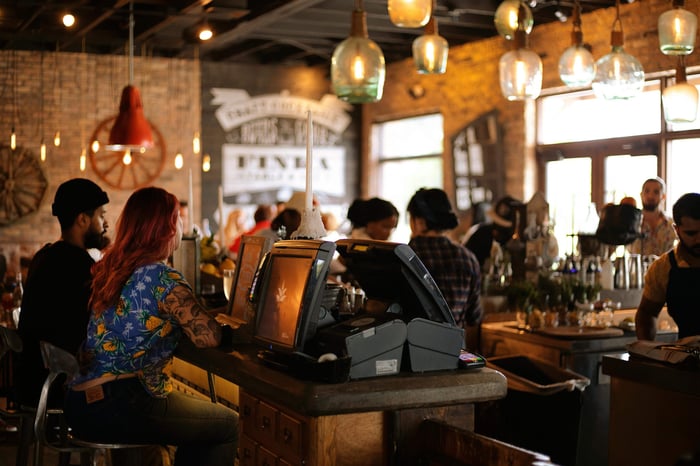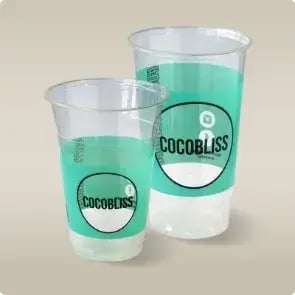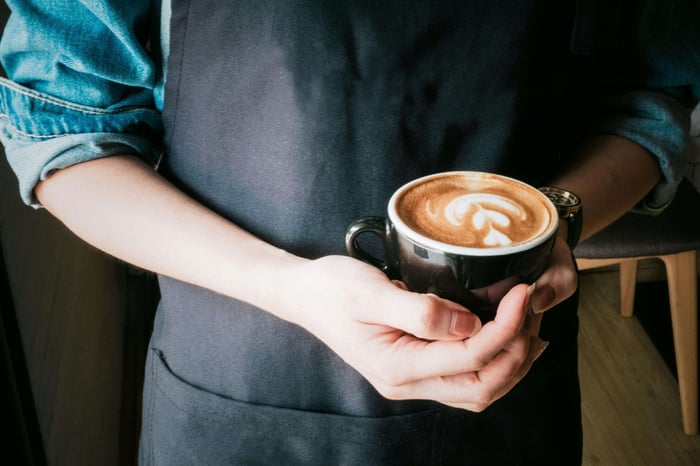
Top Cafe Trends for 2025: Sustainability & Innovation
What's In This Post
- 1. Embracing Sustainable Practices and Eco-Friendly Packaging
- 2. Specialty Coffee Goes Hyper-Local and Unique
- 3. Plant-Based and Alternative Milk Options Will Diversify
- 4. Enhanced In-Store Experiences and "Third Space" Atmosphere
- 5. Tech Integration: The Rise of Digital Loyalty Programs and Smart Ordering
- 6. Functional Foods and Wellness Beverages
- 7. The Zero-Waste Movement Gains Momentum
- 8. Emphasis on Inclusivity and Accessibility
- 9. Smaller Menus Focused on Quality and Customisation
- 10. Immersive Virtual and Augmented Reality (VR/AR) Experiences
- Final Thoughts: Shaping the Future of Cafe Culture
The cafe industry is continually evolving, and cafe trends for 2025 promises to bring a wave of exciting new trends that reflect changing consumer values and preferences. Driven by advancements in technology, sustainability, and a stronger focus on well-being, cafes are poised to take on more innovative, eco-conscious approaches to serve an increasingly discerning customer base. Below, we’ll explore key trends that are expected to shape the cafe landscape, along with actionable insights for cafes to stay competitive.
1. Embracing Sustainable Practices and Eco-Friendly Packaging
As environmental consciousness reaches new heights, sustainability will remain a top priority in 2025. From sourcing organic, locally-grown ingredients to adopting green building practices, cafes will lean into sustainability at every level. One area seeing significant attention is packaging. Customers are increasingly looking for biodegradable, compostable, or reusable alternatives to reduce waste. For cafes, this means investing in environmentally-friendly packaging solutions that align with customer expectations.
This is where Planet Friendly Packaging comes in. We provide cafes with a wide selection of biodegradable and compostable packaging options, specifically designed for the food and beverage industry. Our eco-friendly cups, lids, and utensils ensure that cafes can maintain their commitment to sustainability while still delivering high-quality, convenient packaging. By choosing eco-conscious solutions, cafes not only reduce their environmental impact but also appeal to eco-minded consumers.
Resource for Further Reading: Sustainable Food Packaging for Circular Business
2. Specialty Coffee Goes Hyper-Local and Unique
Cafes are shifting away from mass-produced coffee beans to offer a unique, hyper-local experience. In 2025, cafes will go beyond the basics by working directly with micro-lot farms and single-origin suppliers. The result? Distinctive, traceable flavours that tell the story of a specific place and producer, enriching the customer experience.
This focus on unique sourcing also encourages cafes to emphasise seasonality in their coffee offerings. Instead of relying on a uniform supply, cafes will rotate their coffee menus based on what is in season, just as high-end restaurants do with food. This provides customers with the opportunity to experience new flavours throughout the year while supporting sustainable farming practices.
Pro Tip: Highlight the unique origins of your coffee beans on your menu and social media, sharing stories from the farms or regions that produced them.
3. Plant-Based and Alternative Milk Options Will Diversify
The plant-based milk market continues to grow rapidly, with oat, almond, and soy leading the way in cafes around the world. In 2025, expect to see even more innovative milk alternatives, such as hemp, macadamia, and barley milk, entering the mainstream. These alternatives cater to various dietary restrictions and offer customers with specific preferences more choices.
Beyond milks, alternative sweeteners like agave, monk fruit, and coconut sugar are becoming popular for their lower glycemic index and unique flavours. By providing a diverse range of options, cafes can appeal to health-conscious customers seeking both indulgence and wellness benefits.
4. Enhanced In-Store Experiences and "Third Space" Atmosphere
Cafes are increasingly becoming "third spaces" – locations that serve as a community hub, away from home and work. To attract customers, many cafes are focusing on creating unique in-store experiences that foster a sense of belonging and relaxation. In 2025, expect to see more cafes investing in cozy, thoughtfully designed interiors that encourage customers to linger.
Some cafes are taking this idea further by hosting community events, like book clubs, live music performances, or art exhibitions, giving customers reasons to come back beyond coffee. This emphasis on creating memorable experiences will help cafes build loyal, local customer bases.
Pro Tip: Invest in comfortable seating and flexible layouts to encourage longer visits. Consider adding Wi-Fi and ample outlets to cater to remote workers or study groups.
5. Tech Integration: The Rise of Digital Loyalty Programs and Smart Ordering
In the age of smartphones, consumers are looking for convenience at their fingertips. Digital loyalty programs are quickly becoming the norm, replacing the old-fashioned punch cards. These digital programs can offer personalised rewards, notify customers of new menu items, and encourage repeat visits through points, discounts, or special perks.
In addition, cafes are implementing smart ordering systems to streamline customer service. Kiosks, QR codes, and mobile ordering apps allow customers to place orders from their devices, reducing wait times and increasing order accuracy. By embracing digital integration, cafes can provide a more efficient, personalised service experience.
Pro Tip: Encourage customers to sign up for digital loyalty programs by offering an initial discount or free coffee for first-time enrolees.
6. Functional Foods and Wellness Beverages
As more people prioritise wellness, cafes are expanding their menus to include functional foods and beverages with specific health benefits. In 2025, expect to see options like turmeric lattes, adaptogenic teas, and mushroom coffee that promote mental clarity, immunity, and stress relief.
Functional foods, such as chia puddings, protein-packed smoothies, and antioxidant-rich acai bowls, are also gaining popularity in cafes. These options appeal to health-conscious customers who want nutrient-dense meals that taste great and are easy to take on the go.
Pro Tip: Educate your staff on the health benefits of functional foods so they can share these details with customers, enhancing the customer experience.
7. The Zero-Waste Movement Gains Momentum
Many cafes are taking zero-waste goals seriously, aiming to minimise waste in their operations by using reusable materials, composting food waste, and donating surplus ingredients. In 2025, zero-waste cafes will implement waste tracking systems to monitor what they’re throwing out and make adjustments to reduce waste.
From a packaging perspective, choosing compostable, biodegradable options is a big step toward zero waste. Planet Friendly Packaging supports zero-waste cafes with a range of eco-friendly products that minimise environmental impact without compromising quality. Our packaging, sourced from renewable materials, can be composted, allowing cafes to reduce their footprint while meeting regulatory requirements.
8. Emphasis on Inclusivity and Accessibility
In 2025, expect cafes to adopt more inclusive and accessible designs to better serve a diverse range of customers. Whether it’s adding ramps and wider doorways for wheelchair access, or incorporating menus in braille, cafes will prioritise accessibility as part of their customer experience. Moreover, more cafes will offer options for various dietary needs and restrictions, such as gluten-free, nut-free, or vegan choices.
This shift not only helps build a welcoming atmosphere but also broadens a cafe’s customer base, making it accessible to everyone in the community. By promoting inclusivity, cafes demonstrate their commitment to serving all customers equally.
9. Smaller Menus Focused on Quality and Customisation
Gone are the days of extensive menus. In 2025, smaller, more curated menus will become the standard, allowing cafes to focus on high-quality offerings that can be customised to meet individual tastes. Customers are increasingly looking for personalised options, like choosing their coffee strength, milk type, and add-ons. This allows cafes to enhance the customer experience without overwhelming staff or resources.
Offering a streamlined menu also helps cafes reduce waste by focusing on fewer ingredients, which ties back into the zero-waste movement. By prioritising quality and customisation, cafes can deliver exceptional, memorable products that customers can truly enjoy.
10. Immersive Virtual and Augmented Reality (VR/AR) Experiences
As technology becomes more accessible, cafes are exploring immersive experiences to attract customers. Through VR or AR, cafes can create unique, engaging experiences that offer customers a virtual trip to the coffee farm where their beans were grown or an interactive menu experience.
Although these technologies are still emerging in the cafe industry, they have enormous potential to elevate the cafe experience, creating memorable interactions that go beyond what’s in the cup. For example, some cafes might use AR to allow customers to see the story behind their coffee or get details on the brewing process, creating an added layer of enjoyment.
Final Thoughts: Shaping the Future of Cafe Culture
The cafe trends of 2025 showcase an industry that is evolving in response to consumer demands for sustainability, technology, and wellness. By embracing these shifts, cafes can position themselves as leaders in an ever-changing market, capturing the attention of new customers while nurturing loyalty among existing patrons. As these trends take hold, cafes have the opportunity to redefine what it means to be a part of the local community and a sustainable, socially responsible business.
Planet Friendly Packaging stands ready to support cafes in this journey. By choosing our eco-friendly packaging solutions, cafes can align with these forward-thinking trends while maintaining a commitment to sustainability. Together, we can create a cafe culture that’s as environmentally friendly as it is innovative.
Embrace these trends, and set your cafe up for a successful, forward-thinking 2025!




